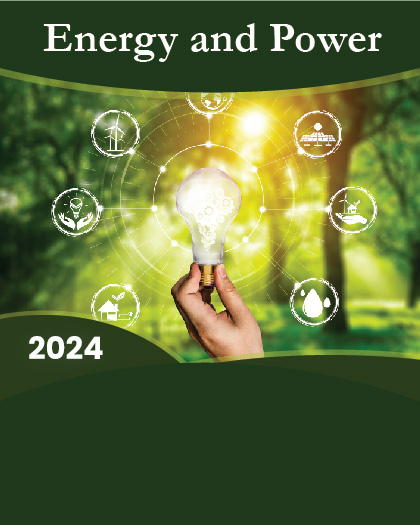CHAPTER 1: INTRODUCTION
1.1. Report description
1.2. Key benefits for stakeholders
1.3. Key market segments
1.4. Research methodology
1.4.1. Secondary research
1.4.2. Primary research
1.5. Analyst tools and models
CHAPTER 2: EXECUTIVE SUMMARY
2.1. Key findings of the study
2.2. CXO perspective
CHAPTER 3: MARKET OVERVIEW
3.1. Market definition and scope
3.2. Key findings
3.2.1. Top investment pockets
3.3. Porter's five forces analysis
3.4. Market dynamics
3.4.1. Drivers
3.4.1.1. Higher threat to environment through battery disposal
3.4.1.2. High recycling rate associated with lead-acid batteries
3.4.2. Restraints
3.4.2.1. Focus on lowering cost of lithium-ion battery rather than its recyclability
3.4.3. Opportunity
3.4.3.1. Rapid adoption of electric vehicles
3.5. Parent market overview
3.6. Patent analysis, 2015-2018
3.6.1. Patent analysis by country
3.6.2. Patent analysis by applicant
3.6.3. Patent analysis by Innovator
3.7. Impact of government rules and regulations
3.7.1. Resource Recovery and Circular Economy Act, 2016 (RRCEA)
3.7.2. Mandatory renewable energy targets
CHAPTER 4: BATTERY RECYCLING MARKET, BY CHEMISTRY
4.1. Overview
4.1.1. Market size and forecast
4.2. Lead-acid battery
4.2.2. Market size and forecast, by region
4.2.3. Market share analysis, by country
4.3. Lithium-based battery
4.3.2. Market size and forecast, by region
4.3.3. Market share analysis, by country
4.4. Nickel-based battery
4.4.1. Market size and forecast, by region
4.4.2. Market share analysis, by country
4.5. Others
4.5.2. Market size and forecast, by region
4.5.3. Market share analysis, by country
CHAPTER 5: BATTERY RECYCLING MARKET, BY SOURCE
5.1. Overview
5.1.1. Market size and forecast
5.2. Automotive batteries
5.2.2. Market size and forecast, by region
5.2.3. Market share analysis, by country
5.3. Industrial batteries
5.3.2. Market size and forecast, by region
5.3.3. Market share analysis, by country
5.4. Consumer & electronic appliance batteries
5.4.2. Market size and forecast, by region
5.4.3. Market share analysis, by country
CHAPTER 6: BATTERY RECYCLING MARKET, BY APPLICATION
6.1. Overview
6.1.1. Market size and forecast
6.2. Transportation
6.2.1. Market size and forecast, by region
6.2.2. Market share analysis, by country
6.3. Consumer electronics
6.3.1. Market size and forecast, by region
6.3.2. Market share analysis, by country
6.4. Industrial
6.4.1. Market size and forecast, by region
6.4.2. Market share analysis, by country
6.5. Others
6.5.1. Market size and forecast, by region
6.5.2. Market share analysis, by country
CHAPTER 7: BATTERY RECYCLING MARKET, BY REGION
7.1. Overview
7.1.1. Market size and forecast, by region
7.2. North America
7.2.1. Market size and forecast, by chemistry
7.2.2. Market size and forecast, by source
7.2.3. Market size and forecast, by application
7.2.4. Market size and forecast by Country
7.2.5. U.S.
7.2.5.1. Market size and forecast, by chemistry
7.2.5.2. Market size and forecast, by source
7.2.5.3. Market size and forecast, by application
7.2.6. Canada
7.2.6.1. Market size and forecast, by chemistry
7.2.6.2. Market size and forecast, by source
7.2.6.3. Market size and forecast, by application
7.2.7. Mexico
7.2.7.1. Market size and forecast, by chemistry
7.2.7.2. Market size and forecast, by source
7.2.7.3. Market size and forecast, by application
7.3. Europe
7.3.1. Market size and forecast, by chemistry
7.3.2. Market size and forecast, by source
7.3.3. Market size and forecast, by application
7.3.4. Market size and forecast by Country
7.3.5. Germany
7.3.5.1. Market size and forecast, by chemistry
7.3.5.2. Market size and forecast, by source
7.3.5.3. Market size and forecast, by application
7.3.6. France
7.3.6.1. Market size and forecast, by chemistry
7.3.6.2. Market size and forecast, by source
7.3.6.3. Market size and forecast, by application
7.3.7. Italy
7.3.7.1. Market size and forecast, by chemistry
7.3.7.2. Market size and forecast, by source
7.3.7.3. Market size and forecast, by application
7.3.8. Spain
7.3.8.1. Market size and forecast, by chemistry
7.3.8.2. Market size and forecast, by source
7.3.8.3. Market size and forecast, by application
7.3.9. UK
7.3.9.1. Market size and forecast, by chemistry
7.3.9.2. Market size and forecast, by source
7.3.9.3. Market size and forecast, by application
7.3.10. Rest of Europe
7.3.10.1. Market size and forecast, by chemistry
7.3.10.2. Market size and forecast, by source
7.3.10.3. Market size and forecast, by application
7.4. Asia-Pacific
7.4.1. Market size and forecast, by chemistry
7.4.2. Market size and forecast, by source
7.4.3. Market size and forecast, by application
7.4.4. Market size and forecast by Country
7.4.5. China
7.4.5.1. Market size and forecast, by chemistry
7.4.5.2. Market size and forecast, by source
7.4.5.3. Market size and forecast, by application
7.4.6. Japan
7.4.6.1. Market size and forecast, by chemistry
7.4.6.2. Market size and forecast, by source
7.4.6.3. Market size and forecast, by application
7.4.7. India
7.4.7.1. Market size and forecast, by chemistry
7.4.7.2. Market size and forecast, by source
7.4.7.3. Market size and forecast, by application
7.4.8. South Korea
7.4.8.1. Market size and forecast, by chemistry
7.4.8.2. Market size and forecast, by source
7.4.8.3. Market size and forecast, by application
7.4.9. Australia
7.4.9.1. Market size and forecast, by chemistry
7.4.9.2. Market size and forecast, by source
7.4.9.3. Market size and forecast, by application
7.4.10. Rest of Asia-Pacific
7.4.10.1. Market size and forecast, by chemistry
7.4.10.2. Market size and forecast, by source
7.4.10.3. Market size and forecast, by application
7.5. LAMEA
7.5.1. Market size and forecast, by chemistry
7.5.2. Market size and forecast, by source
7.5.3. Market size and forecast, by application
7.5.4. Market size and forecast by Country
7.5.5. Brazil
7.5.5.1. Market size and forecast, by chemistry
7.5.5.2. Market size and forecast, by source
7.5.5.3. Market size and forecast, by application
7.5.6. Saudi Arabia
7.5.6.1. Market size and forecast, by chemistry
7.5.6.2. Market size and forecast, by source
7.5.6.3. Market size and forecast, by application
7.5.7. South Africa
7.5.7.1. Market size and forecast, by chemistry
7.5.7.2. Market size and forecast, by source
7.5.7.3. Market size and forecast, by application
7.5.8. Rest of LAMEA
7.5.8.1. Market size and forecast, by chemistry
7.5.8.2. Market size and forecast, by source
7.5.8.3. Market size and forecast, by application
CHAPTER 8: COMPETITIVE LANDSCAPE
8.1. INTRODUCTION
8.1.1. MARKET PLAYER POSITIONING, 2018
8.2. TOP WINNING STRATEGIES
8.2.1. Top winning strategies, by year
8.2.2. Top winning strategies, by development
8.2.3. Top winning strategies, by company
8.3. PRODUCT MAPPING OF TOP 10 PLAYER
8.4. COMPETITIVE HEATMAP
8.5. KEY DEVELOPMENTS
8.5.1. New partnerships
8.5.2. Expansions
8.5.3. Acquisition
CHAPTER 9: COMPANY PROFILES
9.1. Aqua Metals, Inc.
9.1.1. Company overview
9.1.2. Company snapshot
9.1.3. Product portfolio
9.1.4. Key strategic moves and developments
9.2. East Penn Manufacturing Company
9.2.1. Company overview
9.2.2. Company snapshot
9.2.3. Product portfolio
9.3. Eco-Bat Technologies Ltd.
9.3.1. Company overview
9.3.2. Company snapshot
9.3.3. Product portfolio
9.4. Enersys
9.4.1. Company overview
9.4.2. Company snapshot
9.4.3. Operating business segments
9.4.4. Product portfolio
9.4.5. Business performance
9.5. Exide Industries Limited
9.5.1. Company overview
9.5.2. Company snapshot
9.5.3. Product portfolio
9.5.4. Business performance
9.5.5. Key strategic moves and developments
9.6. Gopher Resource, LLC
9.6.1. Company overview
9.6.2. Company snapshot
9.6.3. Product portfolio
9.7. Gravita India Limited
9.7.1. Company overview
9.7.2. Company snapshot
9.7.3. Operating business segments
9.7.4. Product portfolio
9.7.5. Business performance
9.7.6. Key strategic moves and developments
9.8. Retriev Technologies
9.8.1. Company overview
9.8.2. Company snapshot
9.8.3. Product portfolio
9.9. TERRAPURE ENVIRONMENTAL
9.9.1. Company overview
9.9.2. Company snapshot
9.9.3. Product portfolio
9.9.4. Key strategic moves and developments
9.10. Umicore
9.10.1. Company overview
9.10.2. Company snapshot
9.10.3. Operating business segments
9.10.4. Product portfolio
9.10.5. Business performance
9.10.6. Key strategic moves and developments























